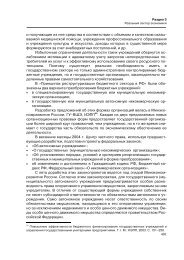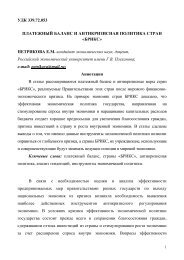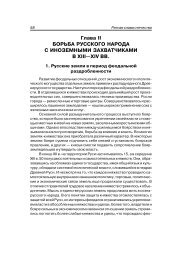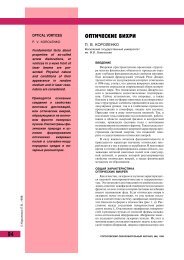Ensuring Strategic Stability in the Past and Present:
Ensuring Strategic Stability in the Past and Present:
Ensuring Strategic Stability in the Past and Present:
You also want an ePaper? Increase the reach of your titles
YUMPU automatically turns print PDFs into web optimized ePapers that Google loves.
Chapter 6: On Tactical <strong>and</strong> Operational-Tactical Nuclear WeaponsIntercont<strong>in</strong>ental strategic nuclear weapons (<strong>and</strong> <strong>the</strong>y were called strategic because of <strong>the</strong>ir <strong>in</strong>tercont<strong>in</strong>entalrange) dom<strong>in</strong>ated <strong>and</strong> still dom<strong>in</strong>ate <strong>in</strong> most of <strong>the</strong> strategic stability equations. Tactical(<strong>and</strong> operational-tactical) weapons were factored out, although <strong>in</strong> fact, <strong>the</strong> majority of suchweapons were comparable to <strong>the</strong> warheads deployed on strategic carriers <strong>in</strong> terms of <strong>the</strong>ir yield. 57Tactical (<strong>and</strong> operational-tactical) nuclear weapons had dom<strong>in</strong>ated as <strong>the</strong> pr<strong>in</strong>cipal <strong>in</strong>strument <strong>in</strong>a potential limited nuclear war. This was especially typical of <strong>the</strong> type of tactical nuclear weaponsdesigned for use <strong>in</strong> battlefield warfare; apparently, <strong>the</strong> most significant type of weapons of thissort were <strong>the</strong> nuclear warheads held by U.S. <strong>and</strong> Soviet cannon artillery (for 155 mm <strong>and</strong> 152 mmhowitzers, respectively). The development of this concept of warfare <strong>and</strong> its <strong>in</strong>troduction to <strong>the</strong>branches <strong>and</strong> arms of each side’s armed forces was soundly deemed a very dangerous tendencythat threatened <strong>the</strong> very erosion of <strong>the</strong> borderl<strong>in</strong>e between conventional <strong>and</strong> nuclear war. 58Compared to <strong>the</strong> 1960s <strong>and</strong> 1970s, <strong>the</strong> number of tactical (<strong>and</strong> operational-tactical) nuclearweapons possessed by all official nuclear powers has considerably decreased. However, <strong>the</strong>y arestill part of <strong>the</strong> arsenals <strong>and</strong> rema<strong>in</strong> an important constituent of <strong>the</strong> aggregate combat strengthof <strong>the</strong> sides. The role of such warfare is still undeterm<strong>in</strong>ed. Until <strong>the</strong> middle of <strong>the</strong> 1980s, tacticalweapons of <strong>the</strong> U.S. <strong>and</strong> its allies were deemed as a means of compensation for <strong>the</strong> imbalance(accord<strong>in</strong>g to <strong>the</strong> foreign experts’ op<strong>in</strong>ion) of conventional weapons <strong>and</strong> forces to <strong>the</strong> good of<strong>the</strong> Soviet Union <strong>and</strong> its Warsaw Treaty allies, but nowadays it’s <strong>the</strong> o<strong>the</strong>r way around. The role oftactical (<strong>and</strong> operational-tactical) nuclear weapons <strong>in</strong> secur<strong>in</strong>g <strong>the</strong> national security of Russia <strong>and</strong>Russia’s allies has <strong>in</strong>creased, but it is not quite customary to speak about that <strong>in</strong> public. 59The role of such weapons is rarely discussed openly by o<strong>the</strong>r nuclear powers ei<strong>the</strong>r, <strong>in</strong>clud<strong>in</strong>g <strong>the</strong>United States, not to mention <strong>the</strong> People’s Republic of Ch<strong>in</strong>a. Thus, <strong>the</strong> authors of <strong>the</strong> Yearbook of<strong>the</strong> Stockholm International Peace Research Institute (SIPRI) <strong>and</strong> <strong>the</strong> Institute of World Economy<strong>and</strong> International Relations (IMEMO) of <strong>the</strong> Russian Academy of Sciences po<strong>in</strong>t out that <strong>the</strong>review of <strong>the</strong> U.S. nuclear weapons policy <strong>and</strong> force structure (one of <strong>the</strong> fundamental open U.S.documents <strong>in</strong> that field) does not cover non-strategic nuclear weapons. However, <strong>the</strong> estimatednumber of such nuclear munitions deployed <strong>in</strong> <strong>the</strong> United States amounted to about 500 warheadsas of 2007; ano<strong>the</strong>r 1,155 warheads are part of <strong>the</strong> reserve. 60Traditional delivery vehicles for tactical nuclear weapons were dual-purpose—front-l<strong>in</strong>e strikeaircraft, medium-range bomber aircraft, artillery, ground-to-ground missiles of <strong>the</strong> ground forces,air <strong>in</strong>terceptor missiles <strong>and</strong> fighter-<strong>in</strong>terceptor aircraft of <strong>the</strong> air defense troops, sea-launchedmissiles <strong>and</strong> torpedoes deployed on submar<strong>in</strong>es <strong>and</strong> surface ships, carrier-launched <strong>and</strong> l<strong>and</strong>basedaircraft of <strong>the</strong> Navy. 61 At certa<strong>in</strong> times <strong>the</strong> number of tactical <strong>and</strong> operational-tacticalnuclear weapons deployed by <strong>the</strong> Soviet Union <strong>and</strong> <strong>the</strong> United States amounted to dozens ofthous<strong>and</strong>s.Belfer Center for Science <strong>and</strong> International Affairs | Harvard Kennedy School 33
















